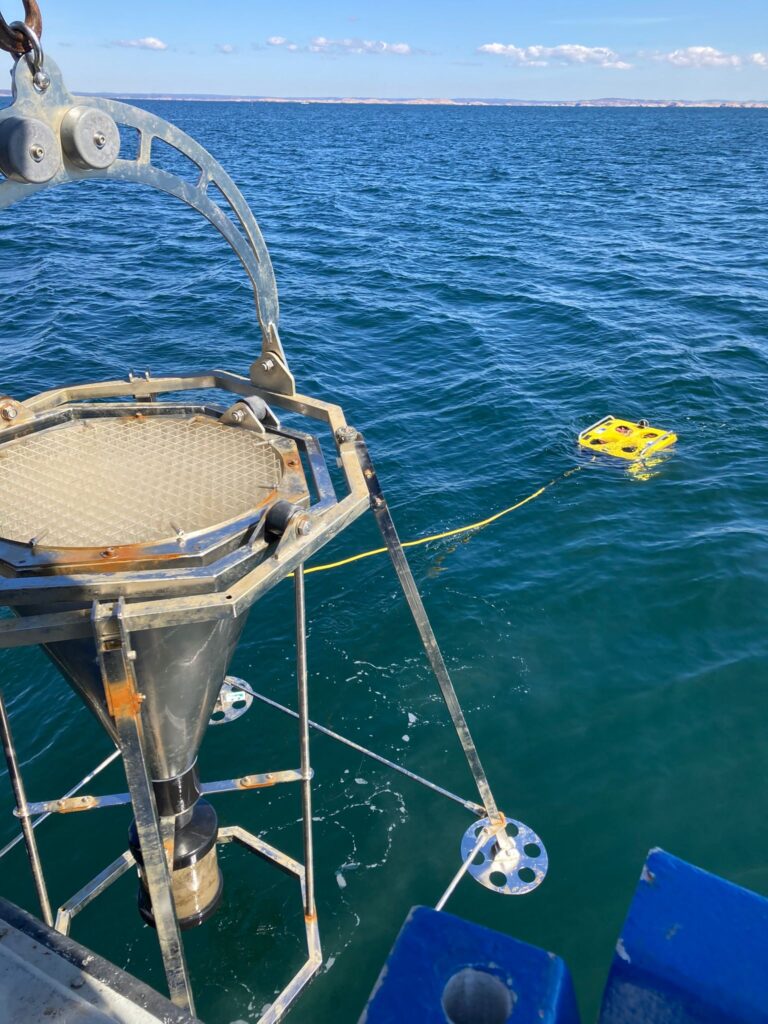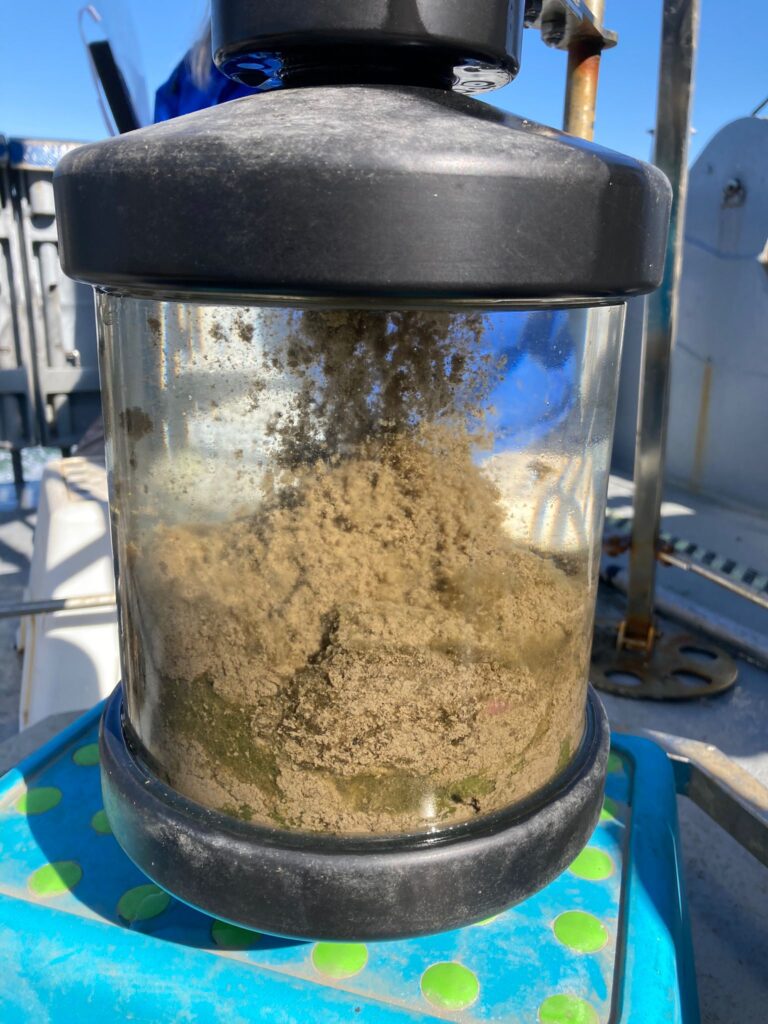


Year 2022 was busy for the environmental data collection in the project. Three full field campaigns were completed, where instruments were left out at the restoration sites to gather data for a duration of at least 2 months, each time.
Current velocities and directions, temperature, salinity and sedimentation, we covered it all. Of course, we expected some variation among sites but, we don’t cease to be surprised by our findings.
Using sediment traps, we can see how much sedimentation the reefs are exposed to over time. The average sedimentation rate at most of the restoration sites, as well as on the Tisler reef, is around 5 g of sediment per square meter per day (g/m2/day). At Väderöarna, where parts of the reef have started to naturally recover after a trawling ban in 2001, the sedimentation rates are beyond anything we have seen elsewhere. Fortyfive grams per square meter per day! That’s 4,5 kg of sedimentper square meter over the three months that we monitored, and 9 times more than most other places.
So how are the corals making it at Väderöarna, wouldn’t that quantity of sediment make them suffocate over time? The answer is, at least partly, the currents. Strong currents help to sweep away the vast quantities of sediment. The interaction of a high sedimentation rate with strong currents could possibly even be beneficial for the corals, giving the corals more chances to catch food particles that drift by.Our conclusion: 45 g of sediment a day, combined with strong currents, may be good enough for natural restoration to occur, but it won’t keep the “doctors” away completely, in this case. We will deploy artificial reefs on other locations near Väderöarna, to give even more coral larvae the chance to settle.





